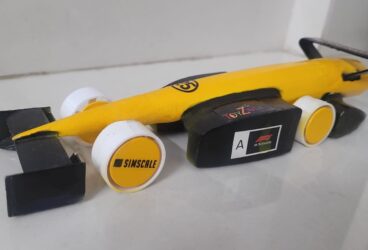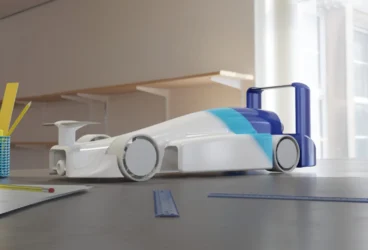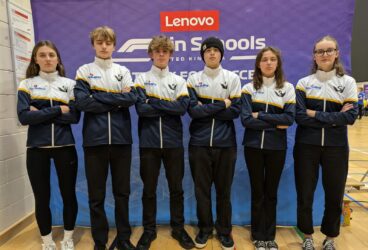The lure of building a race car that can accelerate from 0-60mph in less than 4 seconds, and turn corners at 1.5 lateral G’s, taps into the helmet wearing, adrenaline-seeking nature of teenagers’ brains. As exciting as it is, students in Formula SAE and Formula Student programs actually develop career-preparing lessons in project management, critical problem solving, and team building.
Formula SAE
Since the early 1980s, the Formula SAE competition (also known as “Formula Student”) has been the perfect compliment to the classroom-focused engineering college curriculum. Originating from the U.S.’s Society of Automotive Engineers (SAE) Collegiate Design Series, FSAE plunges college engineering students into a year-long team-building project to design, build, test, and race a small F1-style (open-wheel) race car.
Scoring points in the competition requires competency in both static (design judging, cost analysis, business model presentations) and dynamic (acceleration, skidpad, endurance) events. Win or lose, the lessons learned in Formula SAE and Formula Student prepare students for adulthood.

I was involved with FSAE from 2000-2002 as a student, and recently became a design judge for the competition. As I walked through the Michigan paddock this past summer, I could see that the “on car” technology has advanced quite a bit. I noticed more use of composite materials, aerodynamic elements, and comprehensive data acquisition systems. In talking to many teams, it’s apparent that some things haven’t changed, however—such as staying up all night to prepare for competition.
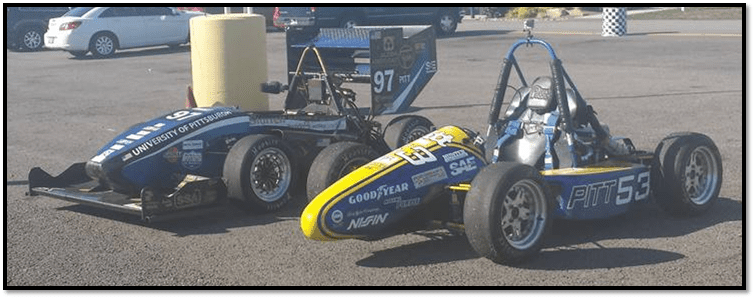
Formula SAE Software and Digital Design
One thing that has changed quite a bit is the use of digital design software like computer-aided design (CAD), finite element analysis (FEA), and computational fluid dynamics (CFD). For example, 15 years ago, the frame would take months to build as each tube was individually cut and fit to each other in a jig. Nowadays, the entire frame is designed in CAD; the files are sent to a supplier to be precision bent and laser cut. In the meantime, vehicle subsystems like steering, suspension, drive train, and electronics are packaged and optimized on the computer. For comparison, in 2001 it was typical to have about 10% of the car in CAD. Today, many teams have over 90% of the car in CAD—thus providing critical weight, center of gravity, and moment of inertia measurements. This means more accurate “baseline” performance numbers and, theoretically, less test-and-tune time.
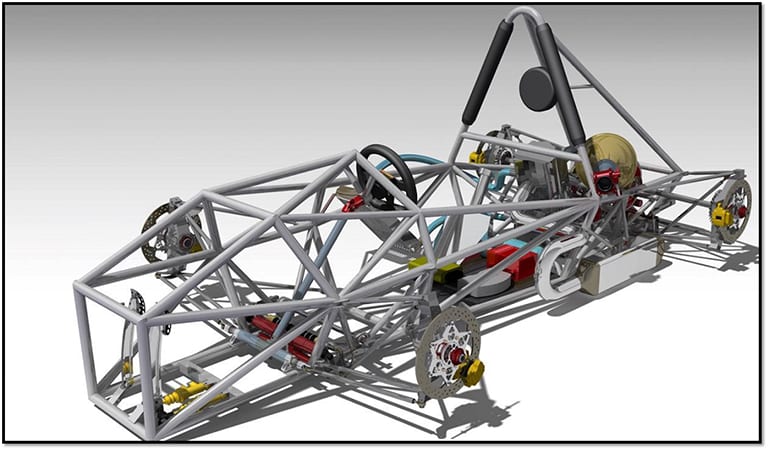
Of course, making the jump into a digital design process brings about a whole new set of time-consuming tasks, driven by the urge to create the most optimized designs. In talking with teams, I get a lot of questions about how to best utilize FEA and CFD simulation into their Formula SAE program. Here are the top 3 questions I’ve gotten from Formula SAE and Formula Student teams:
- Which FEA/CFD software should I choose?
- My school doesn’t have a brand new supercomputer, so how can I do simulations?
- How do I know what to simulate versus what not to simulate?
Let’s discuss the answers to these questions in detail.
SAE Software Which Simulation Software is Best for Formula Student Designs?
So, which FEA or CFD software is best? The one that is within your budget, and has a trustworthy, accessible network of reliable data and current users. The teams in Formula SAE have quite a range of budgets, but they all have one thing in common—they spend as little as possible during design, so there is more money left for building, testing, and traveling. SimScale offers free access to their FEA and CFD platform to all current Formula SAE and Formula Student users. So, no matter what a team’s budget is, the cost of introducing SimScale is $0.00. Nothing. Zero. Zip. Zilch.
Why are the network of current users and reliable data so important? Because more often than not, somebody has already accomplished what you are trying to do. Finding and connecting with that person saves hours of research and potential troubleshooting. With over 100,000 users, SimScale has one of the largest online CFD and FEA communities in the world. In SimScale, simulations can be easily shared among users, thus enabling them to directly compare methods, settings, and results. No other FEA and CFD software allows direct access to such critical information. With public projects from Formula One and World Endurance Championship (LMP1), the knowledge transfer opportunity for Formula SAE teams is endless.
SAE Hardware Accessing the Necessary Hardware
Many teams I have talked to do not have the computing power needed to obtain relevant results. This is especially true with CFD analysis, which typically requires more computing power than FEA. The “total cost” of owning and maintaining a server is quite high. The hardware itself may be relatively cheap, but the infrastructure needed to manage it requires dedicated IT personnel, which is just not feasible for many schools.
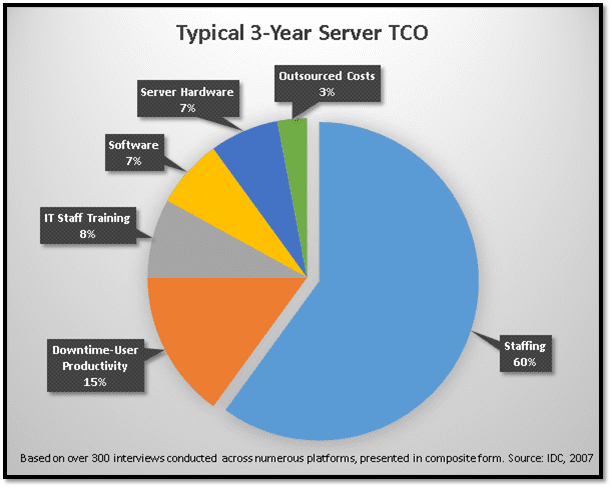
Let’s say a student wants to get a laptop for school and use it for FEA or CFD simulation. At the time of this writing, a typical “high performance” laptop comes with four cores (i.e., a “quad-core” processor) and 8 GB of RAM. In comparison, SimScale gives users access to 32 cores and 60 GB of RAM. That’s about eight times the computing power. For free.
On the other hand, many schools have computer labs, which have high-performance machines that are specifically tuned for analytical computation. Unfortunately, these labs are not efficient at managing the “ebb and flow” of student activity. They are either empty or packed. Plus, let’s face it—students just don’t have time to go to a computer lab. With SimScale, students can simulate from anywhere on campus, or even at the track.
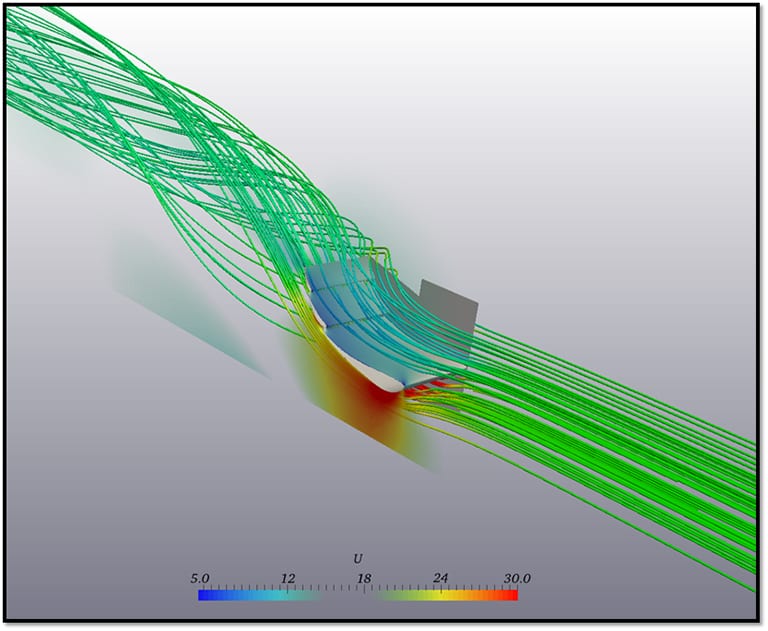
To get an idea of how much computing power is needed for simulation, here is a CFD analysis of the rear wing of an FSAE car. It is cut in half to take advantage of symmetry and it has a grid size of about 3 million elements. On SimScale, this analysis took just 19 minutes to solve. Wonder what the flow over the entire vehicle would be? Expect a grid size over 10 million elements. A typical laptop would not be able to handle this type of simulation, but on SimScale, it would solve in about an hour.
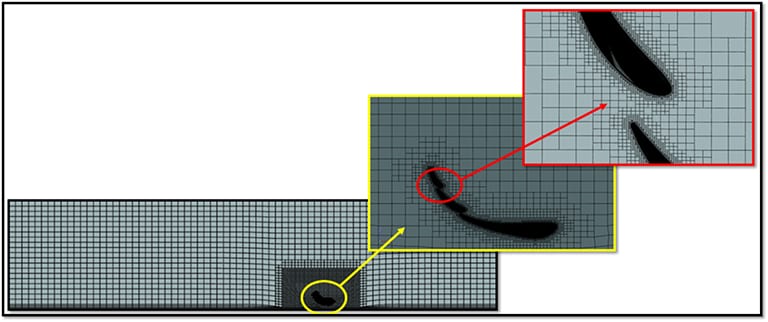
In addition, prudent engineers never conduct just one analysis; they conduct many analyses as they continue to optimize their design, based on the results of the previous simulation. The strategy is simple—the more simulations you do, the more you learn about your design, and the better your design gets. In the real world, professional designers simulate as much as they can. Engineering is a knowledge game.
Formula Student Simulation What to Simulate and What Not to Waste Time On
This one is actually easier than one might think. FEA and CFD “earn their keep” by simulating complex 3D designs. If what you’re working on is not a complex 3D design, then seriously consider using a spreadsheet or hand calculations instead of simulation software. For example, the steel tubes of a space frame chassis, or a suspension “A-arm” act as two-force members. Thus, the stresses can easily be predicted using simple spreadsheet calculations. The same can be true for sizing hardware. There is typically little-to-no value in conducting FEA on a bolted joint, as the cost/benefit ratio of trying to accurately model the friction is too high.
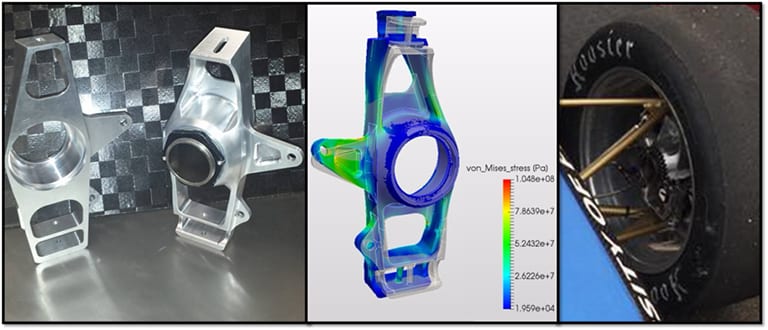
The wheel upright, however, is a great application of FEA. Why? It serves several purposes, such as holding the wheel bearing in place, transferring loads to the suspension, and supporting the brake calipers. As a result, this part has a complex shape with multiple load paths. Since the wheel upright is located outside of the “sprung chassis”, it is critical to minimize its mass, in order to increase suspension performance. The perfect balance between performance and reliability is needed, and an FEA software is the perfect tool to help the designer. The same holds true for other complex and highly stressed components in the suspension, pedal assembly, and drivetrain.
Never Forget
One thing that has certainly not changed over the last 15 years is the reality that many Formula SAE and Formula Student teams forget to write things down. In the mad rush to finish the car, and the excitement of being at the competition, critical design documentation and test data go missing. Documentation is such an important part of engineering that many companies have formal design processes specifically focused on it. The biggest benefit of SimScale is the fact that everything is documented automatically as you do it. As new members join the team, they can simply access all of the existing FEA and CFD analyses that are in SimScale. All of the geometry, boundary conditions, and results, are at your fingertips. In SimScale, projects can be commented on, allowing for easy, direct communication among teammates. This makes writing reports and creating design presentations quick and easy, and access is always available with the latest information. This also lets newcomers climb the learning curve quickly, so they can immediately add value to the team.
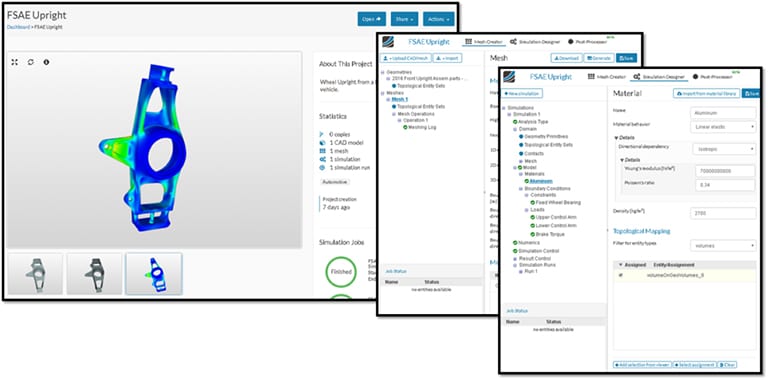
With free access to massive computational power, a vast community of professionals, and industry-leading collaboration tools, the SimScale web-based FEA and CFD platform is ideally suited for Formula SAE and Formula Student teams. If you want to learn more about it, watch the recording of my webinar, in which I explain how to optimize Formula SAE or Formula Student designs with SimScale. I also encourage you to read this blog post: How to optimize a fuel tank in motorsports?
Based in Boston, USA, Fastway Engineering delivers innovative project-based curricula in a wide range of CAD and CAE applications. With an agnostic approach, the instructor-led, web-based training focuses less on the WHAT, and more on the HOW and the WHY. Class discussions cover a broad range of topics from theory and experimentation to strategy and time management.
Whether it’s a full classroom or one-on-one, on-site or online, Fastway Engineering teaches designers how to become better decision makers. Fastway Engineering merges the best practices and latest software by partnering directly with CAD and CAE software companies, academia, and the industry. Specializing in creating custom training solutions for clients, Fastway Engineering also does projects in design and analysis. Collaborate with them by filling out the form here.

